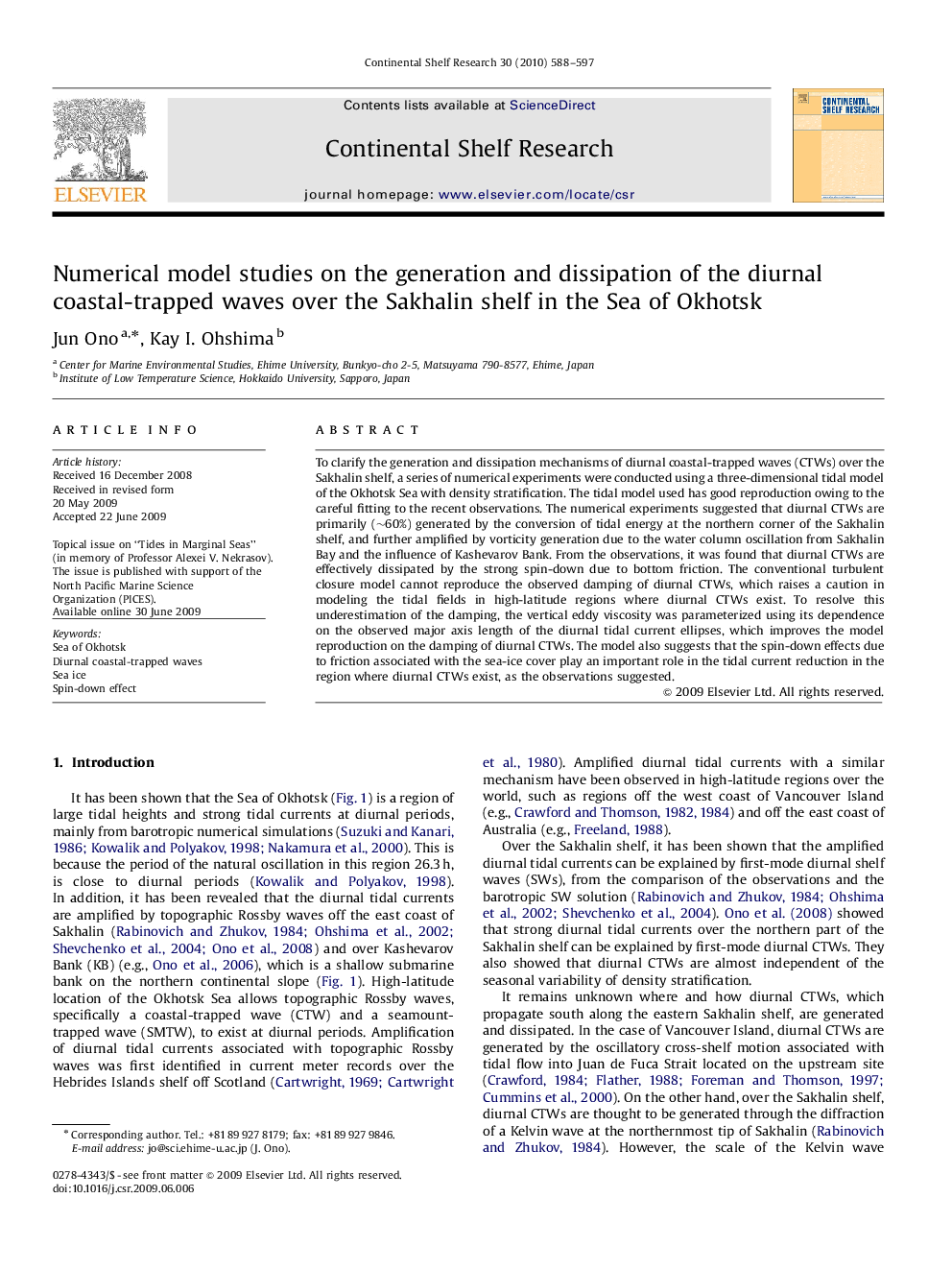| Article ID | Journal | Published Year | Pages | File Type |
|---|---|---|---|---|
| 4532954 | Continental Shelf Research | 2010 | 10 Pages |
Abstract
To clarify the generation and dissipation mechanisms of diurnal coastal-trapped waves (CTWs) over the Sakhalin shelf, a series of numerical experiments were conducted using a three-dimensional tidal model of the Okhotsk Sea with density stratification. The tidal model used has good reproduction owing to the careful fitting to the recent observations. The numerical experiments suggested that diurnal CTWs are primarily (~60%) generated by the conversion of tidal energy at the northern corner of the Sakhalin shelf, and further amplified by vorticity generation due to the water column oscillation from Sakhalin Bay and the influence of Kashevarov Bank. From the observations, it was found that diurnal CTWs are effectively dissipated by the strong spin-down due to bottom friction. The conventional turbulent closure model cannot reproduce the observed damping of diurnal CTWs, which raises a caution in modeling the tidal fields in high-latitude regions where diurnal CTWs exist. To resolve this underestimation of the damping, the vertical eddy viscosity was parameterized using its dependence on the observed major axis length of the diurnal tidal current ellipses, which improves the model reproduction on the damping of diurnal CTWs. The model also suggests that the spin-down effects due to friction associated with the sea-ice cover play an important role in the tidal current reduction in the region where diurnal CTWs exist, as the observations suggested.
Keywords
Related Topics
Physical Sciences and Engineering
Earth and Planetary Sciences
Geology
Authors
Jun Ono, Kay I. Ohshima,
